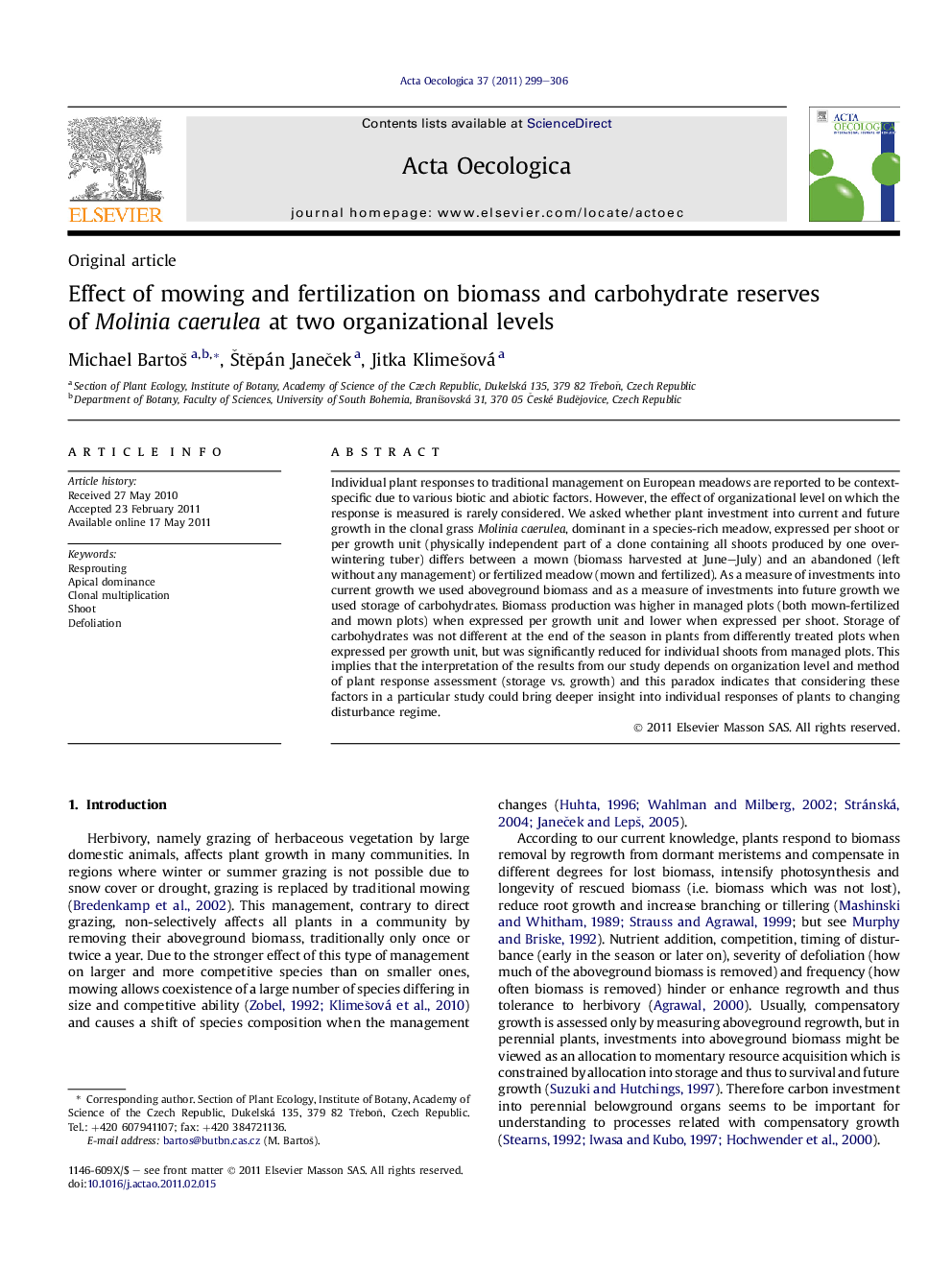| کد مقاله | کد نشریه | سال انتشار | مقاله انگلیسی | نسخه تمام متن |
|---|---|---|---|---|
| 4381500 | 1304074 | 2011 | 8 صفحه PDF | دانلود رایگان |

Individual plant responses to traditional management on European meadows are reported to be context-specific due to various biotic and abiotic factors. However, the effect of organizational level on which the response is measured is rarely considered. We asked whether plant investment into current and future growth in the clonal grass Molinia caerulea, dominant in a species-rich meadow, expressed per shoot or per growth unit (physically independent part of a clone containing all shoots produced by one overwintering tuber) differs between a mown (biomass harvested at June–July) and an abandoned (left without any management) or fertilized meadow (mown and fertilized). As a measure of investments into current growth we used aboveground biomass and as a measure of investments into future growth we used storage of carbohydrates. Biomass production was higher in managed plots (both mown-fertilized and mown plots) when expressed per growth unit and lower when expressed per shoot. Storage of carbohydrates was not different at the end of the season in plants from differently treated plots when expressed per growth unit, but was significantly reduced for individual shoots from managed plots. This implies that the interpretation of the results from our study depends on organization level and method of plant response assessment (storage vs. growth) and this paradox indicates that considering these factors in a particular study could bring deeper insight into individual responses of plants to changing disturbance regime.
► Molinia caerulea responds to mowing/abandonment by changes in growth and storage of carbohydrates.
► The changes depend on organization level (shoot/tussock) and currency (biomass/carbohydrates) considered.
► Biomass production per tussock is higher and per shoot lower on mown in comparison with abandoned plots.
► Storage of carbohydrates per tussock is the same for different treatments and per shoot is lower on mown.
Journal: Acta Oecologica - Volume 37, Issue 4, July–August 2011, Pages 299–306